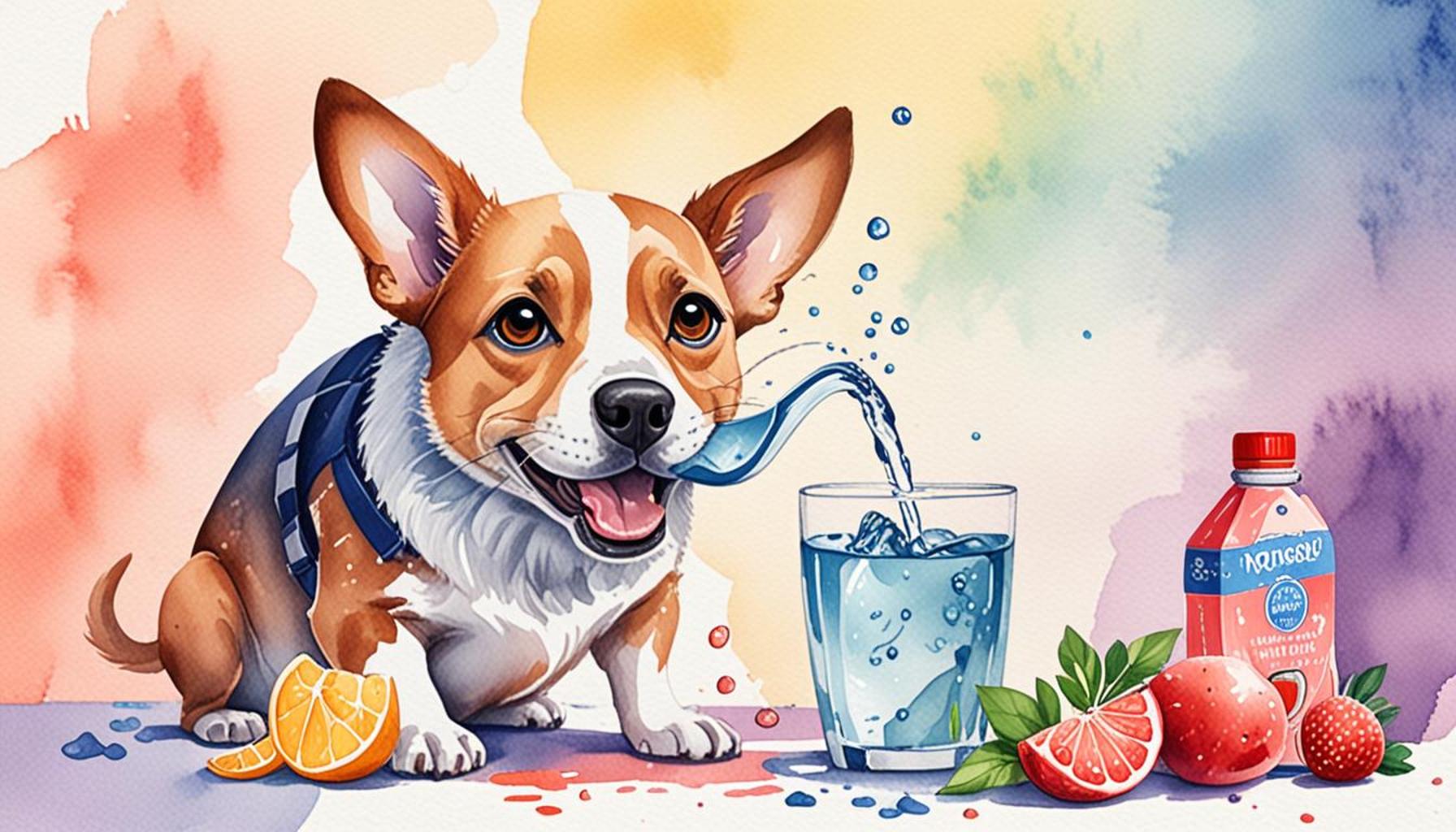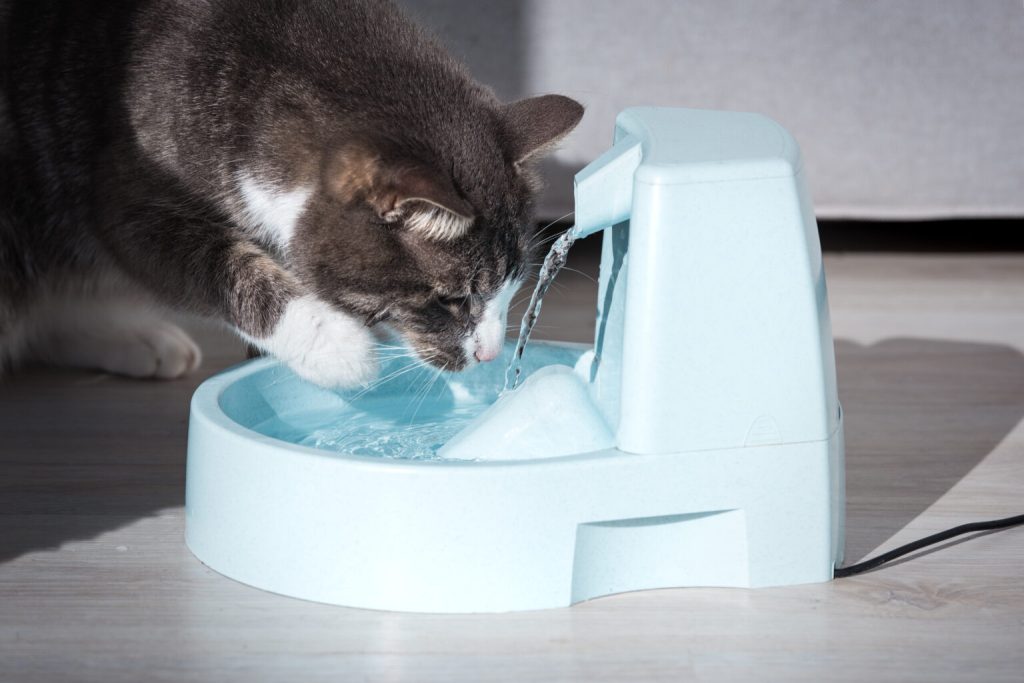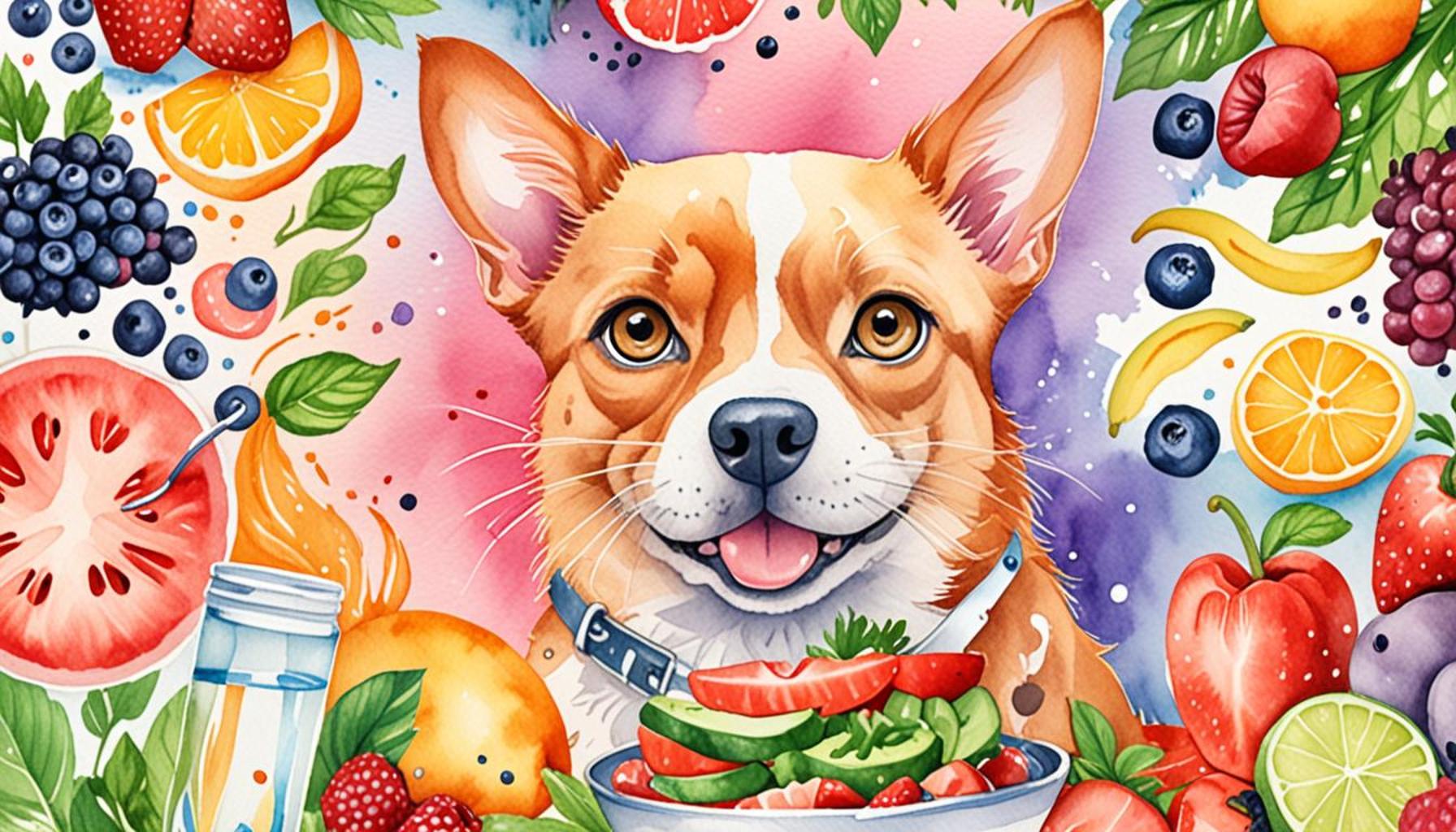The Importance of Hydration: How to Ensure Your Pet Drinks Enough Water

The Importance of Hydration for Your Pet’s Health
Maintaining proper hydration is essential for the overall health of your pet. Just like humans, animals require an adequate intake of water to function optimally. Yet, many pet owners overlook this fundamental aspect of their furry companions’ well-being, which can lead to severe health issues over time.
Consider these vital reasons why hydration matters:
- Regulating Body Temperature: Water plays a crucial role in regulating your pet’s body temperature. During hot days, pets can easily overheat, especially if they are active or have thick fur. Hydration helps maintain a stable internal temperature, preventing heat-related illnesses.
- Supporting Organ Function: Adequate hydration is necessary for the kidneys, liver, and other vital organs to perform efficiently. The kidneys, in particular, filter toxins from the bloodstream, and without sufficient water, these organs are overworked, leading to potential kidney stones and infections.
- Promoting Digestive Health: A well-hydrated animal is less likely to experience digestive issues such as constipation or bloating. Water facilitates proper nutrient absorption and waste elimination, ensuring that your pet’s digestive system operates smoothly.
Unfortunately, many pets do not drink enough water daily, and this can lead to serious health risks. Factors such as diet, activity level, and climate can drastically impact their hydration needs. For instance, pets on dry commercial food may require additional hydration compared to those eating wet food, which has a higher moisture content. Similarly, an active dog running in the summer heat will need more water than a sedentary cat indoors.
Recognizing Signs of Dehydration
Being aware of the signs of dehydration is equally important. Look out for symptoms such as lethargy, dry gums, loss of elasticity in the skin, and decreased appetite. These indicators can develop quickly, highlighting the necessity for pet owners to monitor their pets’ water intake diligently.
Encouraging Your Pet to Drink More Water
In this article, you will learn effective strategies to encourage your pet to drink more water. From enhancing the taste of their drinking water by adding ice cubes or switching to flavored options, to using pet fountains that create a continuous flow of water, making hydration an engaging experience for pets is vital. Additionally, incorporating moisture-rich foods into their diet can further support their hydration needs.

By prioritizing hydration and ensuring your pet has easy access to fresh water at all times, you can safeguard their health and well-being. Make it a habit to regularly check water bowls and consider setting reminders to refill them, ensuring that your beloved pet stays happy and healthy.
DISCOVER MORE: Click here for tips on choosing the perfect toy for your pet’s development
Understanding Your Pet’s Hydration Needs
Each pet has unique hydration needs influenced by various factors. Among them are size, age, activity level, and diet. Understanding these factors is crucial for ensuring that your pet receives enough water to maintain optimal health.
For instance, a large breed dog may require more water than a small breed cat simply due to its size. Generally, it is recommended that pets consume about 1 ounce of water per pound of body weight daily. Thus, a 50-pound dog would need approximately 50 ounces of water per day, while a 10-pound cat would need around 10 ounces. Monitoring their weight and adjusting their water intake accordingly can help maintain proper hydration levels.
Age and Activity Level’s Role in Hydration
The age and activity level of your pet also significantly influence their hydration requirements. Young, active pets will typically need more water, particularly after vigorous play or exercise. Older pets may experience decreased thirst due to health conditions or medications, making it essential for owners to encourage water intake.
- Puppies and Kittens: These energetic little ones are prone to dehydration if not adequately hydrated. Ensure they have access to fresh water at all times, especially after playtime.
- Adult Pets: Active adults require consistent hydration to sustain their energy levels. Normal daily activities should see them drinking water regularly.
- Senior Pets: Older pets might require closer attention, as they may forget to drink or be unable to access their water bowls easily. Consider providing smaller bowls around the house.
The pet’s diet is another significant factor when it comes to hydration. Pets that consume dry kibble will need to drink more water in contrast to those that are fed canned food, which contains higher moisture content. In fact, feeding your pet wet food can be a great way to boost their water intake without them realizing it. If you suspect your pet may not be drinking enough, consult your vet about the possibility of altering their diet to include more moisture-rich options.
Environmental Factors
Environmental conditions can also affect how much water your pet needs. For example, during hot summer months, pets tend to drink more as they lose fluids through panting. If you live in arid climates, monitoring your pet’s water intake during long walks or outdoor play is essential. Always ensure they have access to hydration, especially when the temperatures soar.
In summary, recognizing what influences your pet’s hydration needs is vital. By taking into account their size, age, activity level, diet, and environment, you can better understand how to help your furry friends drink enough water daily to support their overall health and well-being.
The Importance of Hydration: How to Ensure Your Pet Drinks Enough Water
Hydration plays a crucial role in your pet’s overall health, affecting everything from their energy levels to their digestion. Pets require a sufficient amount of water daily, as it helps regulate body temperature, supports joint health, and aids nutrient absorption. Dehydration can lead to severe health issues, including kidney problems and urinary tract infections. To help ensure that your furry friend stays properly hydrated, it’s important to understand their specific water needs and find ways to encourage them to drink more.
First, consider your pet’s breed, size, age, and activity level. Larger and more active breeds generally require more water than smaller or less active ones. For instance, a young, playful Labrador will need more water compared to a sedentary Chihuahua. You can use specialized water bowls that are designed to keep water fresh and appealing. Additionally, some pets prefer filtered or running water; hence, a pet water fountain may be a good investment. This can entice them to drink more frequently, as pets often enjoy drinking from flowing sources.
Moreover, adding water to your pet’s food can increase their overall water intake. Canned food, for instance, has a higher moisture content than dry kibble. Gradually transitioning to a diet of high-moisture food or soaking dry food in water can make a significant difference in maintaining hydration. Consider incorporating hydrating fruits and vegetables such as watermelon or cucumber into their diet, ensuring these foods are safe for your specific pet.
Monitoring your pet’s water intake can also help identify potential health issues early on. Making it a habit to observe their drinking behavior and ensuring their water bowl is always filled with clean, fresh water will keep your pet healthy and hydrated. Remember, if you notice any signs of dehydration, such as lethargy, dry gums, or decreased energy levels, consult your veterinarian immediately.
| Category | Key Features |
|---|---|
| Water Sources | Using bowls, fountains, or adding water to food to encourage drinking. |
| Hydration Foods | Incorporating high-moisture foods can increase hydration levels. |
By paying close attention to your pet’s hydration habits and providing them with a variety of options, you can play a significant role in preventing dehydration and promoting long-term health. Engaging in regular vet check-ups will also help in maintaining a baseline understanding of your pet’s hydration needs, ensuring you are doing everything possible to support their well-being.
DISCOVER MORE: Click here to learn about how nutrition affects your pet’s lifespan
Creative Ways to Encourage Hydration
Ensuring that your pet drinks enough water can sometimes be a challenge, particularly for those picky drinkers. Fortunately, there are several innovative strategies to encourage your furry friend to stay hydrated.
Choosing the Right Water Bowl
The type of water bowl you select can significantly impact your pet’s hydration habits. Animals are naturally drawn to fresh, clean water, so consider investing in a high-quality water bowl that keeps water cool and accessible. Some pets prefer running water, as it’s often perceived to be fresher than stagnant water. For such pets, a pet water fountain could be a game-changer, offering continuous flow and aeration that promotes drinking. Additionally, make sure to clean the bowl every day to prevent buildup of bacteria and keep the taste appealing.
Flavoring the Water
If your pet is reluctant to drink plain water, you might experiment with flavored water. Adding a splash of low-sodium broth (beef or chicken) can make water more enticing for dogs. For cats, consider a few drops of tuna juice—a little goes a long way! However, be cautious and consult your vet about any flavoring before making it a regular practice, as not all additives are pet-safe.
Hydration-Heavy Treats
Utilizing hydration-heavy treats is another effective way to keep your pet hydrated. Fruits like watermelon and cucumbers can be great choices for dogs, while many cats enjoy the moisture from shredded chicken or fish. There are also commercially available treats formulated with high water content. These not only offer hydration but can also add to the excitement of your pet’s diet.
Routine and Accessibility
Establishing a routine for water breaks can promote consistent hydration. Schedule designated times throughout the day for your pet to drink, especially after play or exercise. Make water easily accessible; placing multiple bowls around the house can encourage hydration. For pets who aren’t mobile or have difficulty accessing their water bowls, consider using elevated platforms or permanent placements where they spend the most time.
Monitoring Hydration Levels
Regularly monitor your pet for signs of dehydration, which can manifest through lethargy, dry gums, or reduced skin elasticity. You may also want to perform a quick home assessment by pinching the skin gently. If it doesn’t retract quickly, it could indicate dehydration. Keeping tabs on their general behavior can also offer insights—if they seem less playful or energetic, it might be time to re-evaluate their water intake.
Vet Consultation and Hydration Products
Consulting your veterinarian can be beneficial if you’re concerned about your pet’s hydration levels. They can offer tailored advice and may suggest specialized hydration products, such as electrolyte supplements, which can be particularly useful for pets recovering from illness or under stress. Be proactive about your pet’s hydration as it plays an integral role in their overall health and well-being.
Incorporating these creative suggestions into your daily routine can help ensure that your pet remains properly hydrated. By taking the time to understand and cater to their unique drinking preferences and needs, you can foster a healthier, happier life for your beloved companion.
LEARN MORE: Click here for vital nutrition tips
Conclusion
In conclusion, maintaining proper hydration for your pet is a critical aspect of their overall health and well-being. Understanding the importance of hydration is essential for pet owners, as even mild dehydration can lead to serious health complications. By implementing the strategies discussed, such as choosing the right water bowl, flavoring the water, and offering hydration-heavy treats, you can make drinking water a more enjoyable experience for your furry companions.
Additionally, establishing a routine for water breaks, ensuring easy access to clean drinking water, and regularly monitoring signs of dehydration can help you stay proactive in your pet’s hydration needs. Remember, pets may not always show clear signs of thirst, so it’s vital to be attentive and engaged with their hydration habits.
Consulting a veterinarian can also provide invaluable insights tailored to your pet’s specific needs, especially if you notice changes in their drinking behavior or overall vitality. Exploring hydration products can be particularly effective, especially for animals with unique health considerations.
Ultimately, fostering a culture of hydration not only promotes longevity but also enhances the quality of life for your pets. As stewards of their health, it’s our responsibility to ensure they receive adequate hydration on a daily basis, paving the way for a happier, healthier existence together. By prioritizing hydration, you’re not just quenching their thirst, but you’re also contributing to their vitality and happiness.


